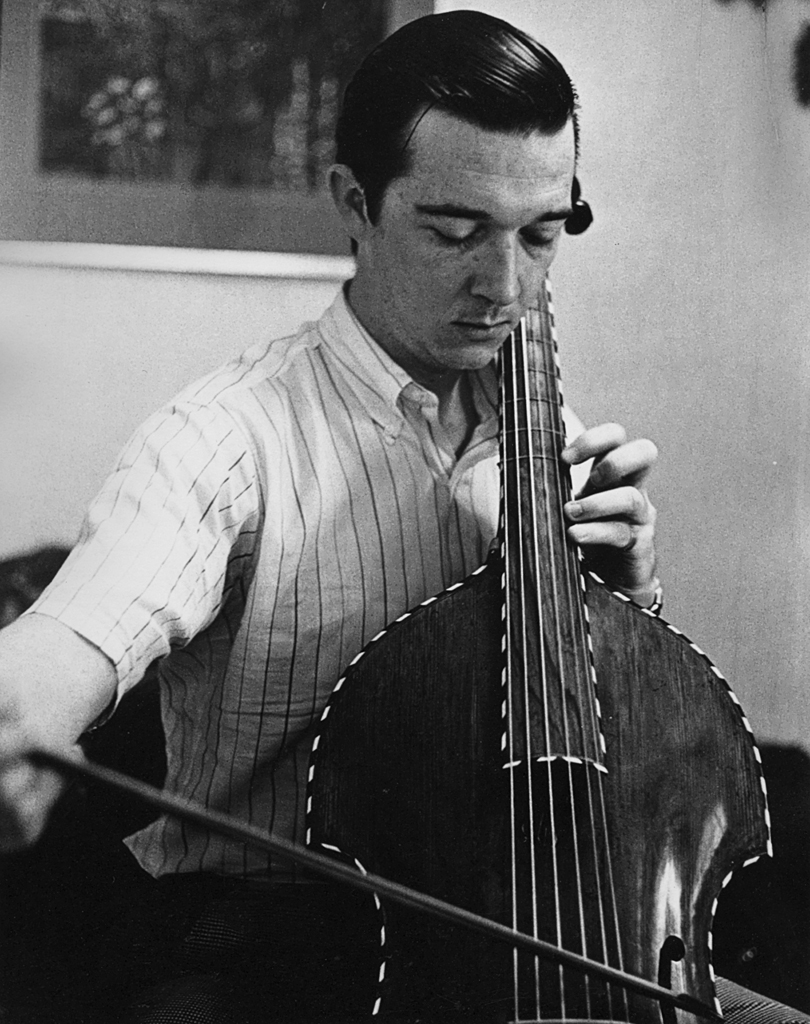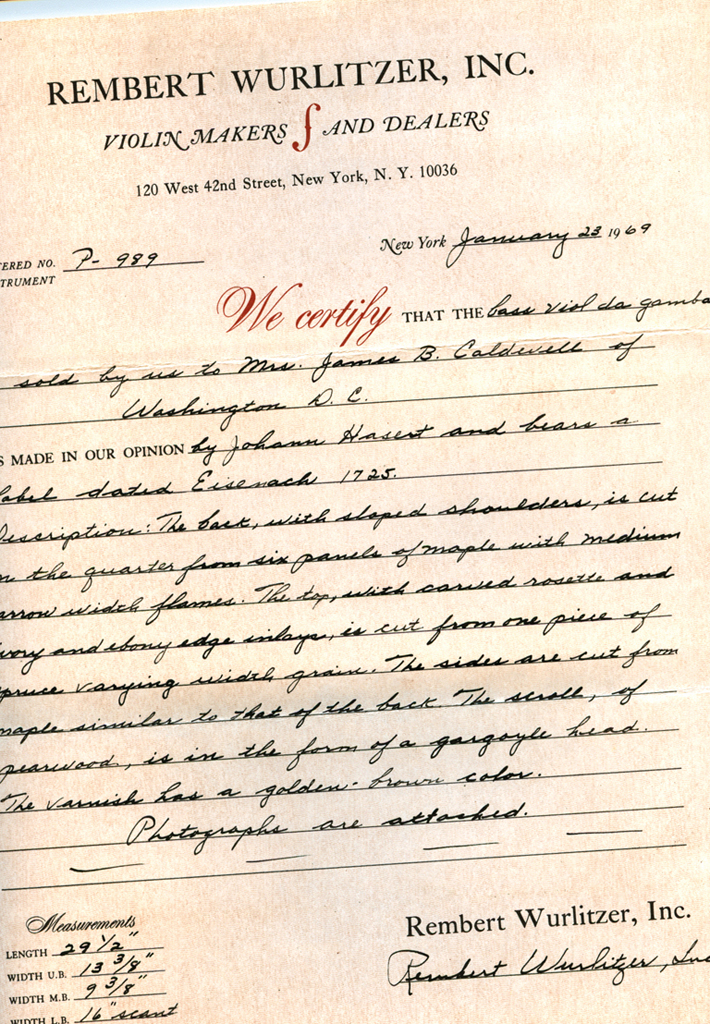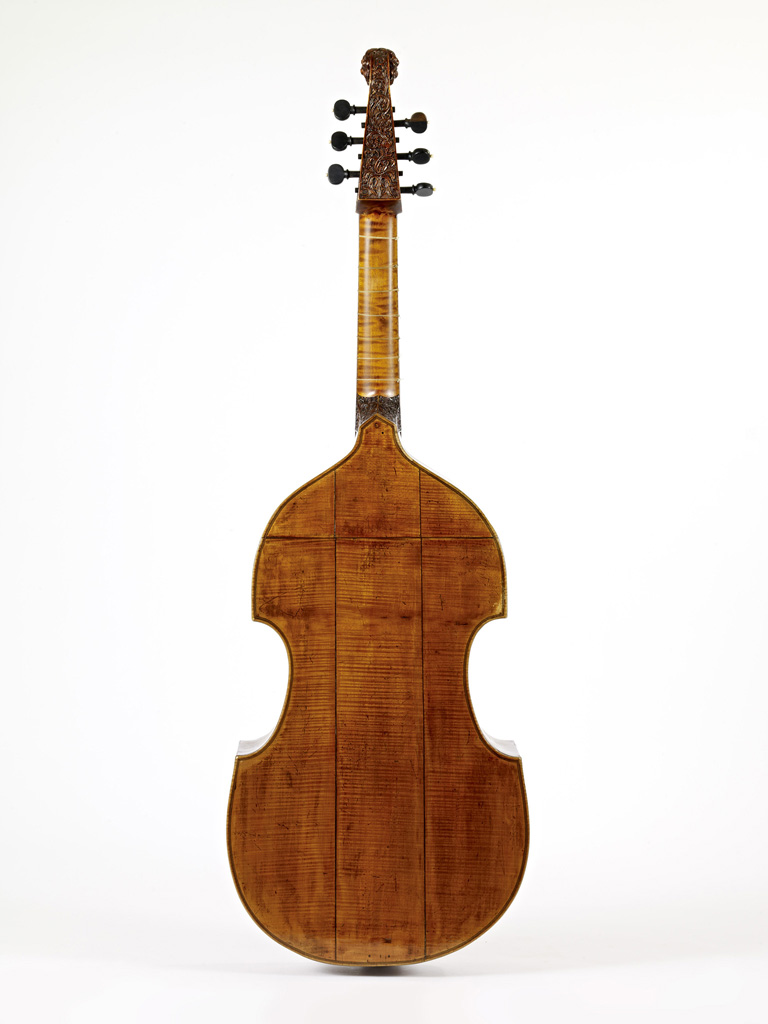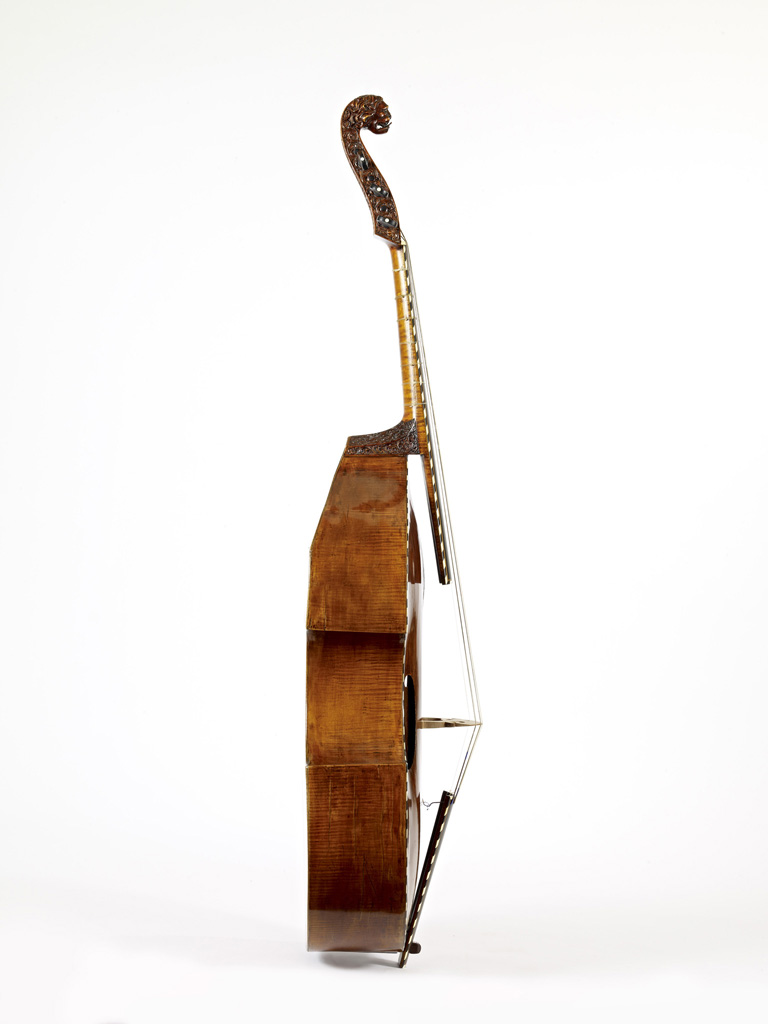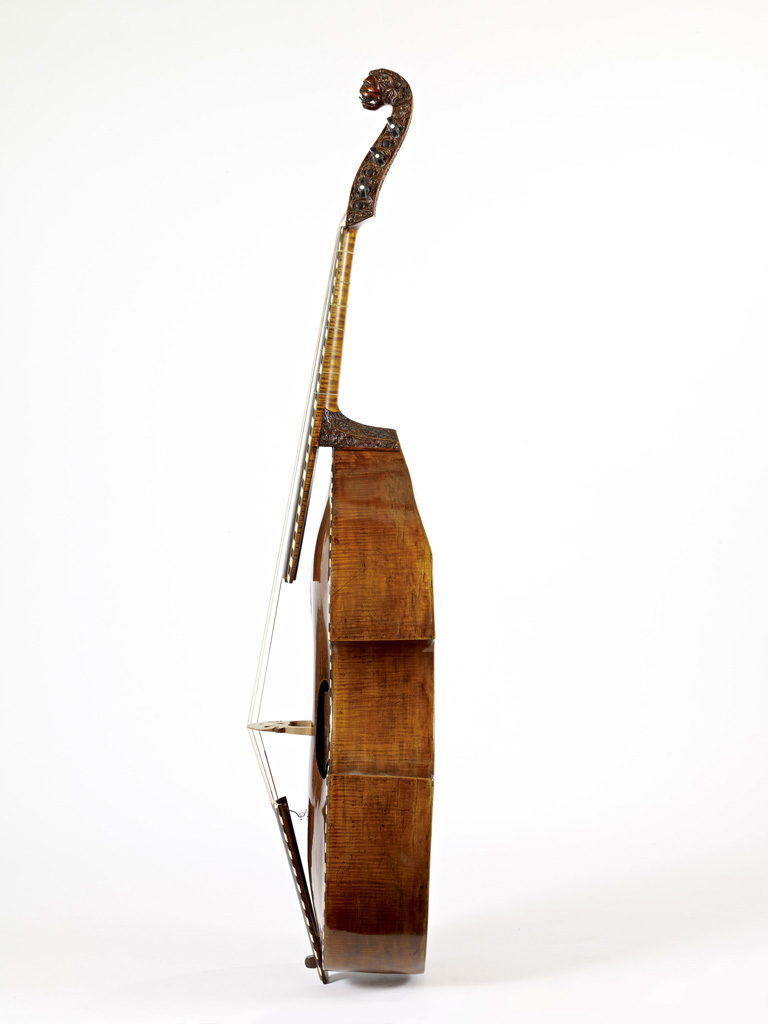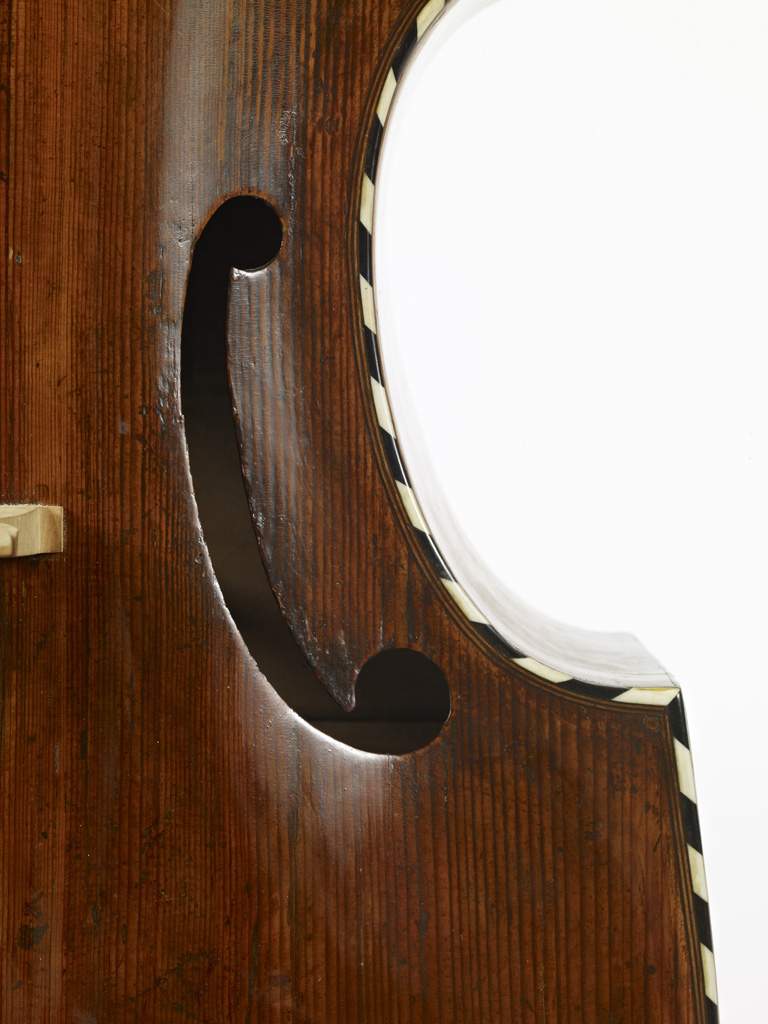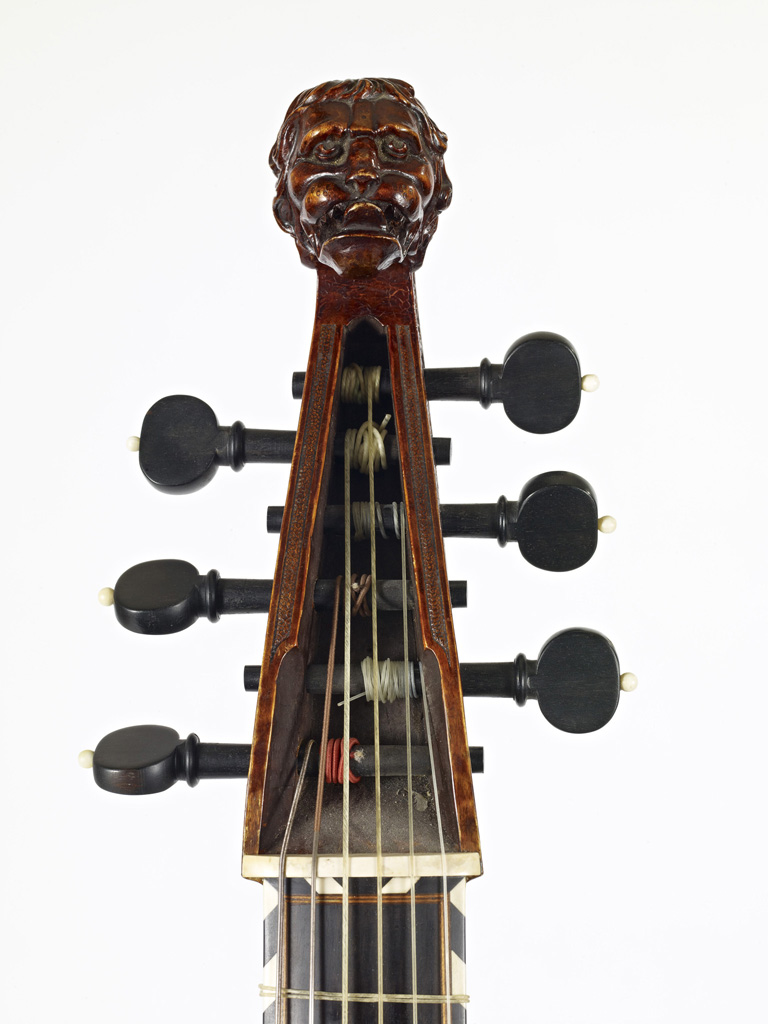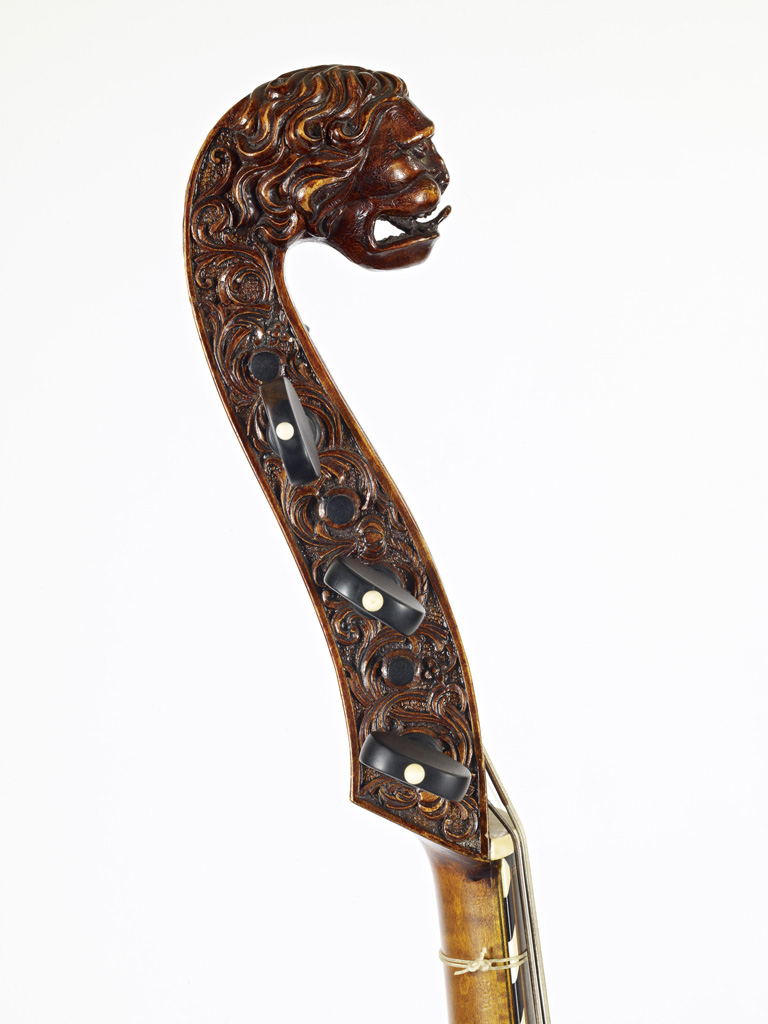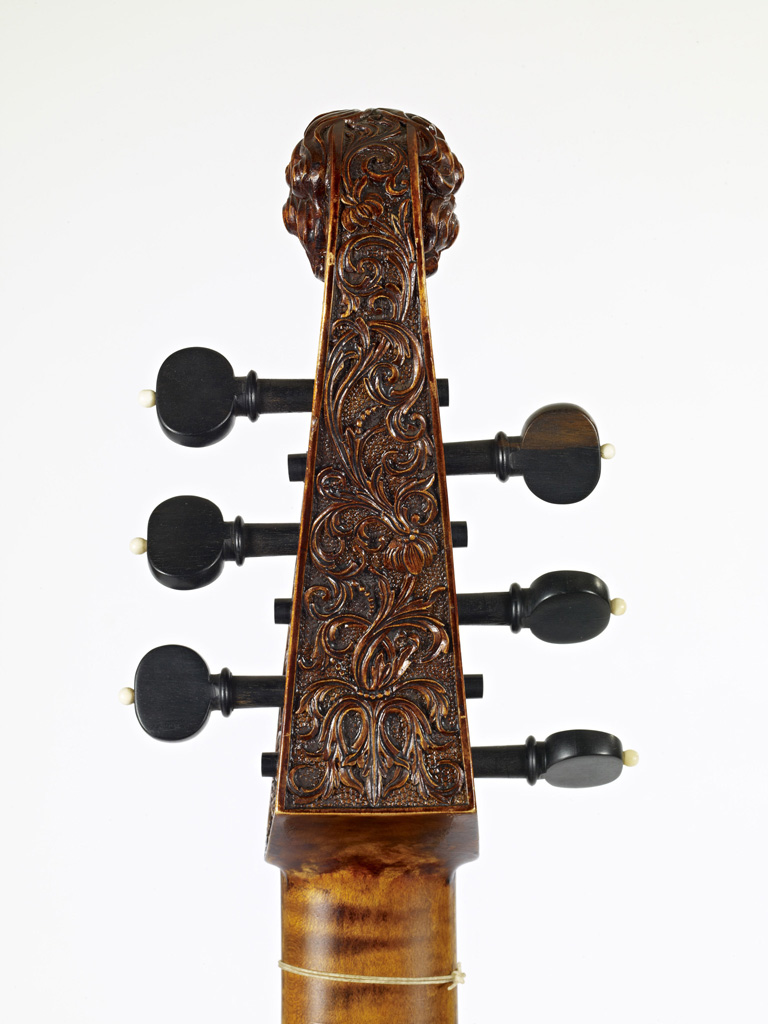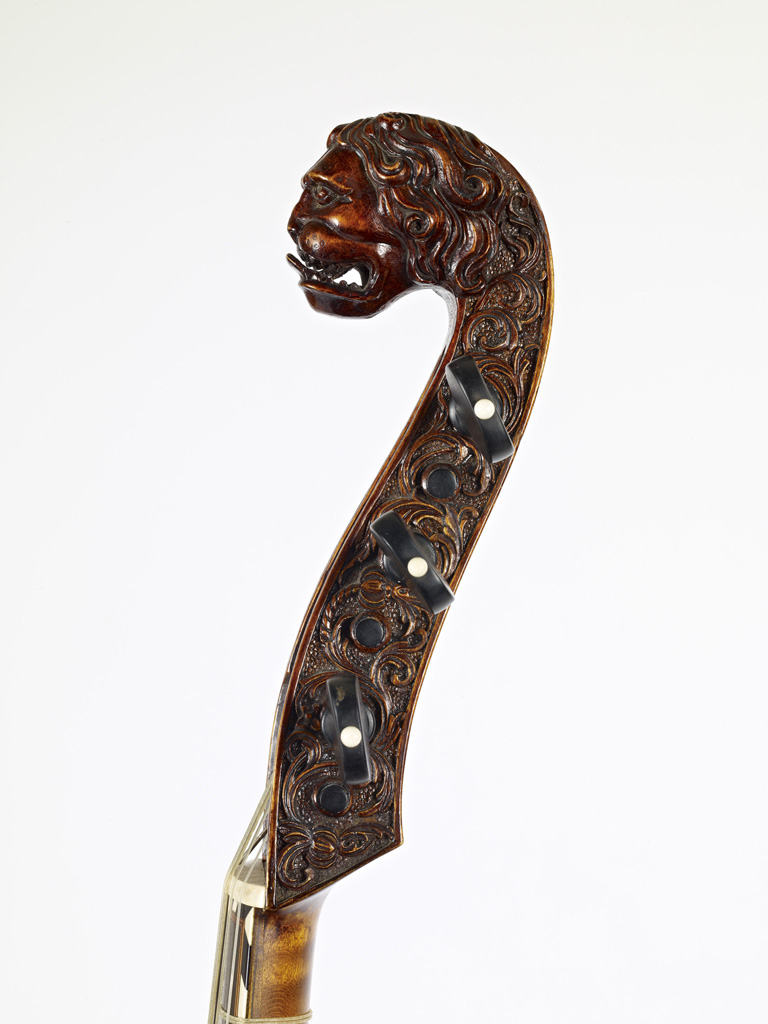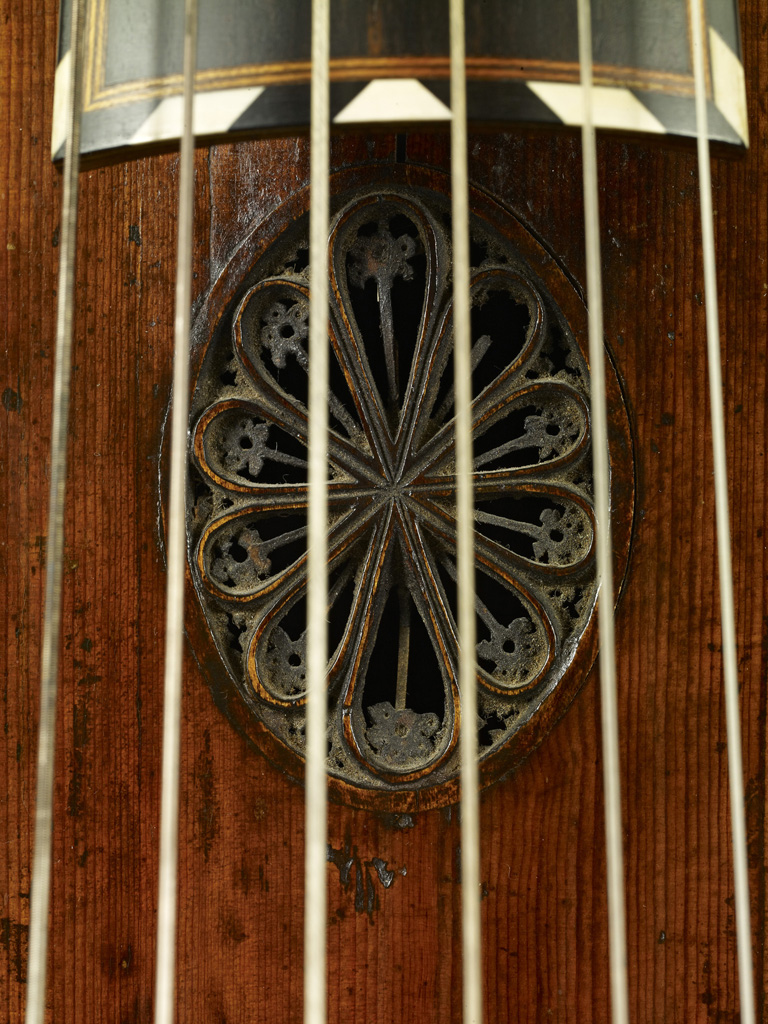The table is of two unmatched pieces, with 8 to 3 growth rings per cm. The wide soundholes are C shaped, and there is an oval boxwood rosette inset below the end of the fingerboard, consisting of ten lobes backed with cut-out flowers in parchment. The black-white-black purfling abuts an edging of diagonal ebony and ivory strips.
The back is three pieces of maple with a fine horizontal flame. The edge purfling is black-white-black, and the same purfling lies along the longitudinal joints as well as across the fold (presumably a later repair). There is an ebony pin either side of the center joint on the bottom block, and one ebony and two maple pins in the neck heel.
The ribs are six pieces of similar maple, butted at the corners, and with purfling inserted between the upper end of the top ribs and the neck joint.
The modern neck and head are maple. The back and sides of the pegbox are carved with a floral design that is echoed on the sides of the neck heel. The head is a lion. The six modern pegs are ebony with ivory pips.The modern fingerboard and tailpiece are maple with ebony veneer, boxwood stringing, and ebony and bone edging to match the body. The modern hookbar is rosewood.
The varnish is dark brown.
Body length 71.5
Body width
upper corner 34.1
center bout 23.8
lower bout 40.2
String length 69.8
Rib height
top block 8.8
fold 13.3
upper corners 13.6
lower corners 13.5
bottom block 13.1
Label
Johann Hasert
Eisenach. 1726
[printed except 26; the last digit might be 3 or 5]
Bought in March 1968 from Rembert Wurlitzer, Inc., New York, who prepared papers dated January 1969 for the sale to us


